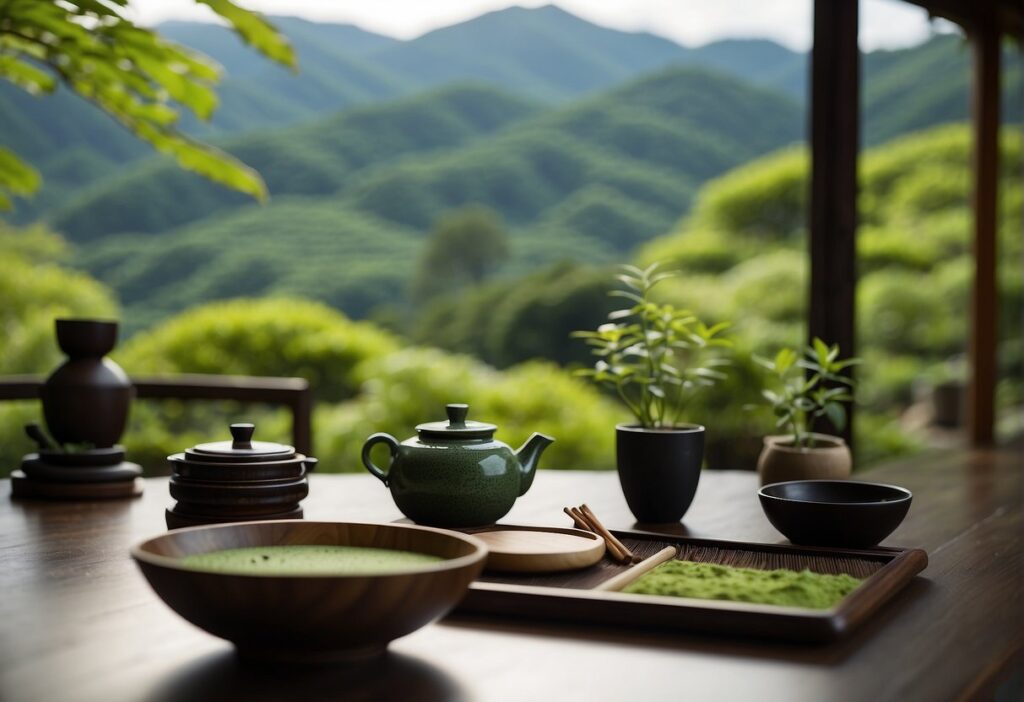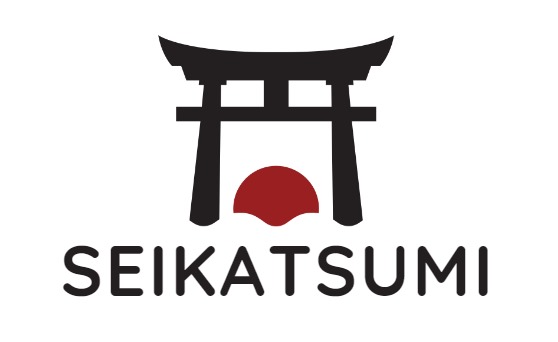Are you passionate about matcha and Japanese tea culture? I share your enthusiasm!
I understand the joy of discovering the finest matcha experiences, especially in a city as rich in tradition as Kyoto. That’s why I’ve dedicated time to exploring the best Matcha Kyoto scene to make it easier for you to enjoy!
I’m thrilled to introduce you to the world of matcha in Kyoto, where the vibrant green tea powder is more than just a drink—it’s a cultural experience.
So, why wait? Dive in and explore the magic of matcha in Kyoto! 🙂

As an avid tea drinker, I was excited to learn about the rich history of Matcha in Kyoto, Japan.
Matcha, a finely ground green tea powder, has been an integral part of Japanese culture for centuries. In this section, I will explore the origins and cultural significance of Matcha in Kyoto, as well as the evolution of Matcha production.
Matcha Kyoto: Origins and Cultural Significance

Matcha was first introduced to Japan by Buddhist monks who traveled to China to study Buddhism and its associated rituals. These monks brought back with them the tea seeds and the knowledge of how to cultivate them.
Matcha quickly gained popularity among the Japanese aristocracy and became an essential part of the tea ceremony.
Kyoto, the heart of Japan’s tea culture, has a long history of producing the finest Matcha in the world. The city’s unique climate and soil conditions are ideal for growing tea, and the traditional methods of cultivation and processing have been passed down through generations.
Matcha has cultural significance beyond its use in tea ceremonies. It is a symbol of hospitality, respect, and harmony.
The preparation and serving of Matcha are steeped in tradition, and every aspect of the process is carefully orchestrated to create a sense of tranquility and mindfulness.
Evolution of Matcha Production
The production of Matcha has evolved over the centuries, with new techniques and technologies being developed to improve the quality and flavor of the tea.
In Kyoto, the traditional method of Matcha production involves shading the tea plants for several weeks before harvest. This process increases the chlorophyll content of the leaves, giving the Matcha its vibrant green color and unique flavor.
After harvesting, the leaves are steamed, dried, and ground into a fine powder using a stone mill. This labor-intensive process requires skill and patience, but it results in a high-quality Matcha that is prized by tea connoisseurs around the world.
Hey you! Are you interested in more food trends? Then be sure to check out our top food articles! You definitely can’t miss it!
Japanese Sushi Essentials: The Best Guide to Enjoying Traditional Flavors 2024
Low Carb Japanese Food 2024: The Best Guide for Delicious and Healthy Food
Japanese Bento Box: Your Guide Preparing The Best Bento Box In 2024!
In recent years, there has been a growing demand for Matcha, both in Japan and abroad.
To meet this demand, some Matcha producers have adopted modern techniques such as machine harvesting and processing. However, many traditional Matcha producers in Kyoto continue to use the time-honored methods that have been passed down through generations.
Matcha Tea Ceremony

As an avid tea lover, I was excited to experience the traditional Japanese tea ceremony during my recent trip to Kyoto.
Matcha, a finely ground green tea powder, is at the heart of this centuries-old ritual. The ceremony is a beautiful and meditative practice that allows one to fully immerse themselves in the moment.
Traditional Practices
During the traditional tea ceremony, guests sit in a tatami-floored room and watch as the host prepares the matcha with precision and care.
The tea is whisked with a bamboo whisk until it becomes frothy and smooth. The tea is then served to guests in a special bowl called a chawan. The guests then take turns admiring the bowl, sipping the tea, and passing it to the next guest.
The traditional tea ceremony is a sensory experience that engages all five senses. The aroma of the tea, the texture of the froth, the sound of the whisk, the sight of the tea in the bowl, and the taste of the tea all come together to create a unique and unforgettable experience.
Modern Interpretations
While the traditional tea ceremony is still practiced in Kyoto and throughout Japan, there are also modern interpretations of the ceremony that cater to a wider audience.
These modern tea ceremonies often include elements of the traditional ceremony but are adapted to suit the needs of modern-day tea enthusiasts.
One such modern interpretation is the tea ceremony workshop offered by MATCHA.
This workshop allows guests to learn about the history and culture of the tea ceremony while also getting hands-on experience in making and serving matcha. The workshop is conducted in English, making it accessible to visitors from around the world.
Matcha Tourism in Kyoto

Kyoto is famous for its matcha, a high-quality green tea that is finely ground into powder.
As a matcha lover, I am excited to share with you some of the best matcha tea houses and matcha-related festivals that Kyoto has to offer.
Famous Matcha Tea Houses
Kyoto has a long history of producing high-quality matcha, and there are many famous tea houses that have been serving matcha for generations.
One of the most renowned and oldest tea houses in Kyoto is Uji Tea House. Located in the historic Uji region, this tea house offers an authentic and traditional matcha experience. The serene ambiance, surrounded by lush green tea fields, provides a perfect setting for enjoying a cup of high-quality matcha.
Another must-visit tea house is Gion Tsujiri, located in the famous Gion district.
This tea house is known for its exceptional matcha ice cream and offers a wide variety of tea types complete with all kinds of guides and informational material to help customers understand all the different varieties.
Matcha-Related Festivals
Kyoto hosts several matcha-related festivals throughout the year.
One of the most popular is the Uji Matcha Festival held in May. This festival celebrates the harvest of the first tea leaves of the season and includes a tea ceremony, a tea-picking experience, and a tea market where you can buy high-quality matcha.
Another popular festival is the Kitano Tenmangu Shrine Tea Ceremony held in July.
This festival features a traditional tea ceremony performed by geisha and maiko, and visitors can also enjoy matcha and traditional Japanese sweets.
Health Benefits of Matcha

As a matcha lover, I am excited to share the amazing health benefits of this vibrant green tea that originates from Kyoto, Japan. Matcha is not only delicious but also loaded with nutrients that can boost your overall health and wellbeing.
Here are some of the health benefits of matcha:
High in Antioxidants
Matcha is rich in antioxidants, which are essential for protecting your body against free radicals that can cause cell damage and lead to chronic diseases such as cancer, heart disease, and Alzheimer’s.
In fact, matcha contains more antioxidants than regular green tea because it is made from whole tea leaves that are ground into a fine powder.
Boosts Brain Function
Matcha contains an amino acid called L-theanine that can help improve brain function by increasing alpha waves in the brain. This can lead to increased focus, concentration, and mental clarity.
Additionally, matcha contains caffeine, which can provide an energy boost without the jitters or crash associated with coffee.
Promotes Heart Health
Matcha has been shown to lower cholesterol and triglyceride levels, which can reduce the risk of heart disease.
It also contains compounds called catechins that can help relax blood vessels and improve blood flow, which can further support heart health.
Supports Weight Loss
Matcha can help support weight loss by boosting metabolism and increasing fat burning. It also contains fiber, which can help keep you feeling full and satisfied for longer periods of time.
Matcha is a delicious and nutritious beverage that can provide a wide range of health benefits. So give it a try and see how it can improve your health and wellbeing.
Frequently Asked Questions
What is Matcha?
Matcha is a high-quality, finely ground green tea powder known for its vibrant color and rich flavor.
How do you prepare Matcha?
Mix 1-2 teaspoons of Matcha with hot water, whisk until frothy, and enjoy.
What are the benefits of Matcha Magic?
Matcha is rich in antioxidants, boosts energy, and supports mental clarity.
If you liked this blog article about Matcha Kyoto, don’t forget to follow us on Pinterest so you don’t miss any more food tips.
Let us know, which of the above is your favorite tip!



